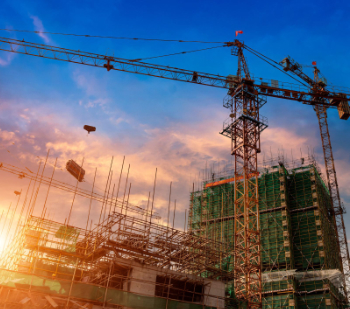Smart homes in Germany
This blog article was originally published by BSRIA on Sept 16th 2016. It was written by Henry Lawson.
For decades, mankind has agonised over such worrying conundrums as whether the fridge light goes out when the door is closed, or whether you need to drive 20 miles home to check that the iron is turned off.
If the 2016 IFA Messe in Berlin, which finished on 7th September 2016, is anything to go by, then these dilemmas will soon be a thing of the past. Not only will I be able to log into my iron from the other side of the world, but a web cam will allow me to check the contents of my fridge, and potentially even the status of the food.
For a long time the idea of smart appliances has seemed almost whimsical. The more serious message from IFA is firstly that most of the major quality appliance manufacturers, in both Europe and Asia Pacific are starting to make serious investments in smart appliances.
Of course, this investment does not prove that the demand will grow to match it. This will depend just as much on a second clear trend, namely that smart appliances are starting to interact with wider home management systems in a way that can potentially change the whole way that households operate, and revolutionise day to day domestic life.
To take a simple example; in the UK there is a lot of talk about shifting tasks that are not time-critical to off-peak times when energy is cheaper. But this mostly hangs upon smart meters.
In Germany, there has been a lot of resistance to smart meters (especially on data protection grounds), but the country is a world leader in domestically generated solar power. Several of the leading ‘white goods’ manufacturers, including Siemens, Miele and Bosch have partnered with SMA, the country’s leading supplier of residential solar power and storage systems. Your wash can now be kicked off automatically when there is enough solar power to drive it thus saving both money and CO2 emissions.
Specialised smart systems are also increasingly being integrated into wider smart home systems, with a combination of open standards and a “best of breed” approach. This allows you not just to invest in one of the market-leading smart lighting systems, but also, for example to use it to changing the light settings to suggest that the building is occupied. Home security is a huge theme in Germany, where burglary rates have actually been rising over the past couple of years. Another smart home system can use top of the range entertainment sound systems to mimic sounds like hoovering – with the added bonus that you can now also annoy the neighbours even when you are on holiday.
One flip-side of this is a degree of potential complexity, and many vendors are aware that systems that are complex to install, program and to manage are incompatible with a true mass market. Accordingly many now offer voice-command systems most commonly using Apple Siri or Amazon Alexa. Some suppliers also offer a degree of “machine learning” based on the behaviour both of typical users and of the actual householder.
Another key trend that BSRIA has also picked up over recent years is that much of the higher-end smart home market overlaps with the light-commercial market. A luxury home and a small office may have many similar requirements in terms of lighting security and energy requirements, and the owners may be willing to make the investment. KNX has a huge presence in this market.
On the other hand, the mass market will only be conquered by systems that are relatively low cost, and simple to install, either by the owners themselves or by an ordinary non specialist electrician. One supplier, Datastrom, makes use of mains electricity wiring to connect and control devices, so can be installed by an electrician. Others deploy low- power devices which can be battery powered and can communicate wirelessly using a low energy protocol such as Z-wave. This also makes the smart home relatively portable, which is an attraction in a country like Germany where far more people rent their homes than do in the UK or the USA.
I came away from IFA with a confirmation that a dynamic smart home market is taking shape as part of the massive expansion in smart technology and the Internet of Things. There remain huge question-marks. While there is almost universal awareness that cyber-security is an issue, and much is being invested in it, it is not yet clear that there is an effective way of keeping all devices secure at all times.
In fact this concern could drive the move towards complete smart homes, as it is probably easier to monitor a network of IoT devices for ‘suspicious behaviour’ than to try to protect and update each one individually on a continual basis.
--BSRIA
[edit] Find out more
[edit] Related articles on Designing Buildings Wiki
Featured articles and news
Encourage individuals to take action to save water at home, work, and in their communities.
Takes a community to support mental health and wellbeing
The why of becoming a Mental Health Instructor explained.
Mental health awareness week 13-18 May
The theme is communities, they can provide a sense of belonging, safety, support in hard times, and a sense purpose.
Mental health support on the rise but workers still struggling
CIOB Understanding Mental Health in the Built Environment 2025 shows.
Design and construction material libraries
Material, sample, product or detail libraries a key component of any architectural design practice.
Construction Products Reform Green Paper and Consultation
Still time to respond as consultation closes on 21 May 2025.
Resilient façade systems for smog reduction in Shanghai
A technical approach using computer simulation and analysis of solar radiation, wind patterns, and ventilation.
Digital technology, transformation and cybersecurity
Supporting SMEs through Digitalisation in Construction.
Villa Wolf in Gubin, history and reconstruction. Book review.
[[w/index.php?title=W/index.php%3Ftitle%3DW/index.php%3Ftitle%3DW/index.php%3Ftitle%3DW/index.php%3Ftitle%3DW/index.php%3Ftitle%3DConstruction_contract_awards_down_1bn%26action%3Dedit%26redlink%3D1%26action%3Dedit%26redlink%3D1%26action%3Dedit%26redlink%3D1%26action%3Dedit%26redlink%3D1%26action%3Dedit%26redlink%3D1&action=edit&redlink=1|Construction contract awards down £1bn]]
Decline over the past two months compared to the same period last year, follows the positive start to the year.
Editor's broadbrush view on forms of electrical heating in context.
The pace of heating change; BSRIA market intelligence
Electric Dreams, Boiler Realities.
New President of ECA announced
Ruth Devine MBE becomes the 112th President of the Electrical Contractors Association.
New CIAT Professional Standards Competency Framework
Supercedes the 2019 Professional Standards Framework from 1 May 2025.
Difficult Sites: Architecture Against the Odds
Free exhibition at the RIBA Architecture Gallery until 31 May.
PPN 021: Payment Spot Checks in Public Sub-Contracts
Published following consultation and influence from ECA.
Designing Buildings reaches 20,000 articles
We take a look back at some of the stranger contributions.
Lessons learned from other industries.

























